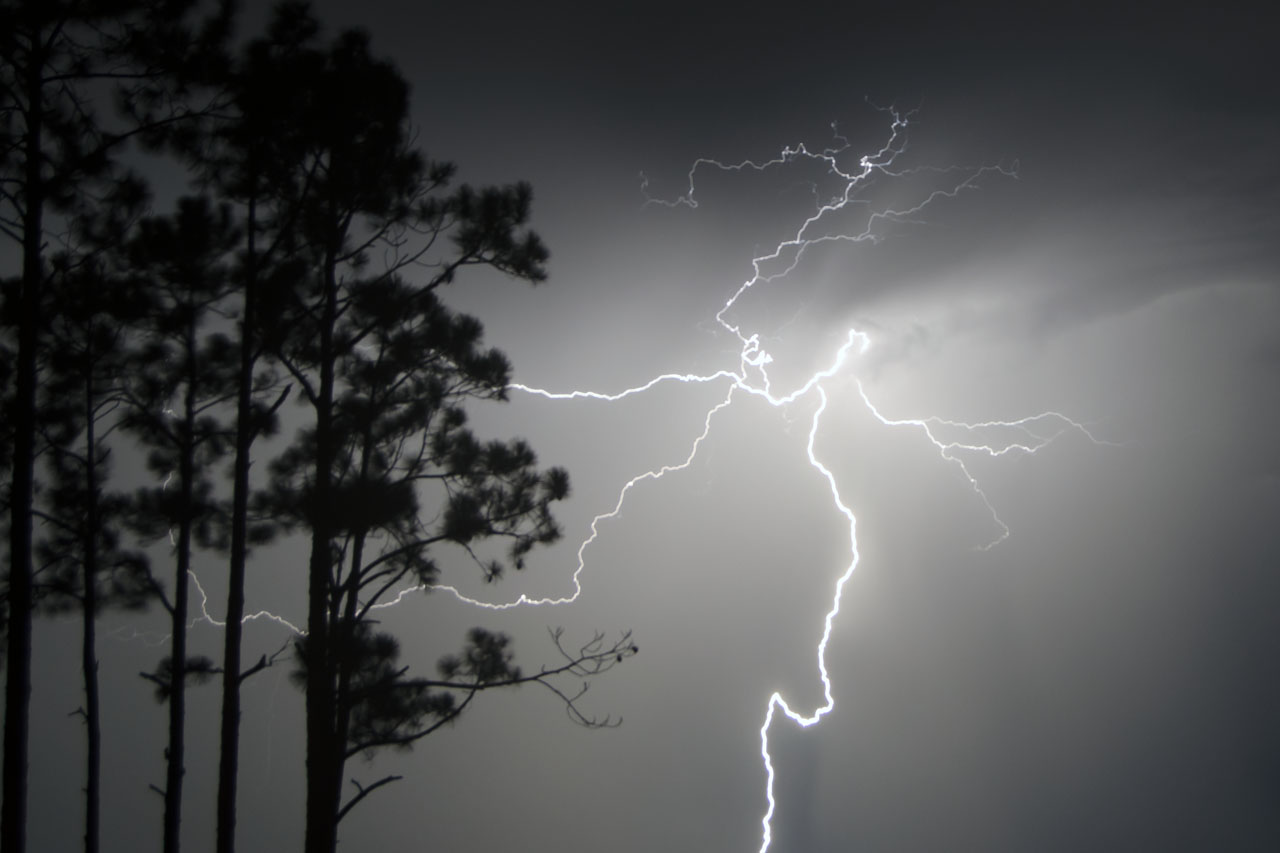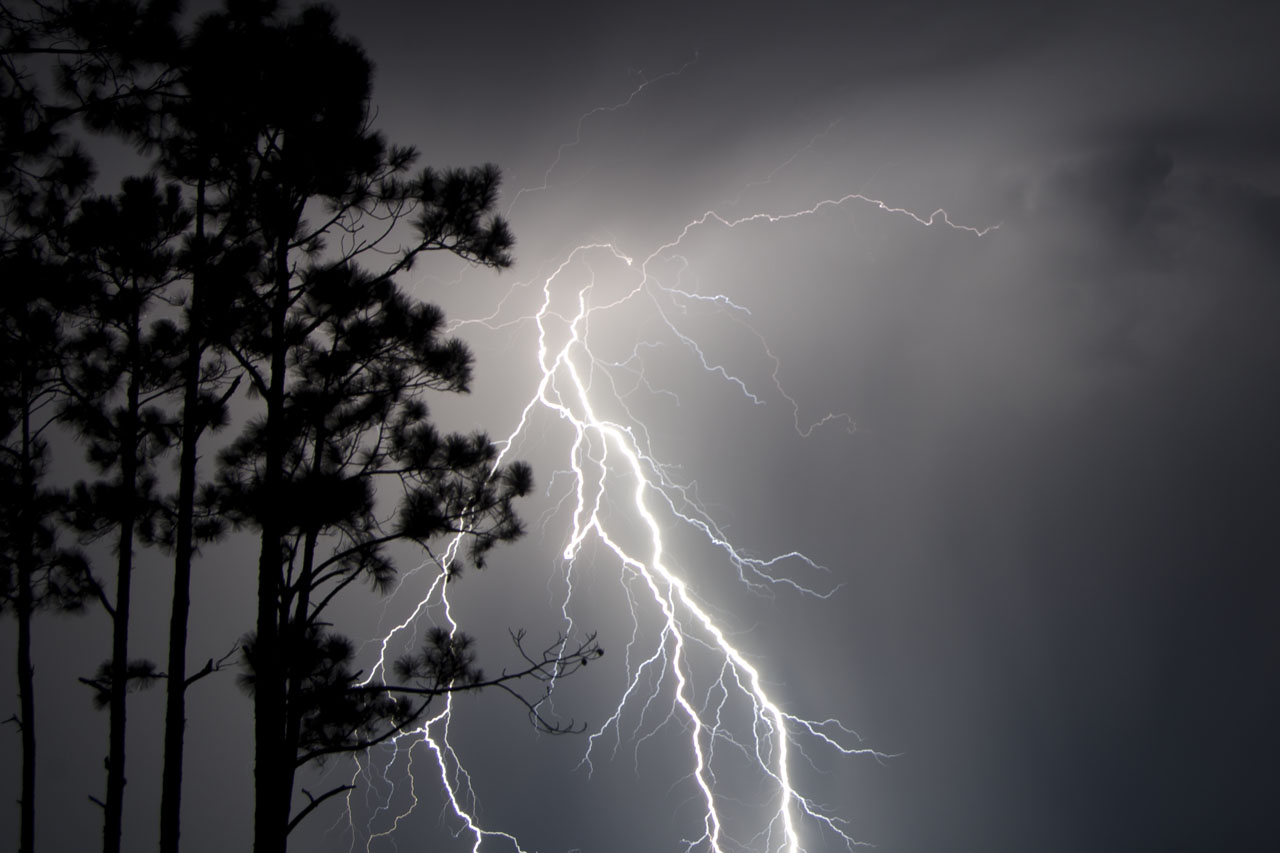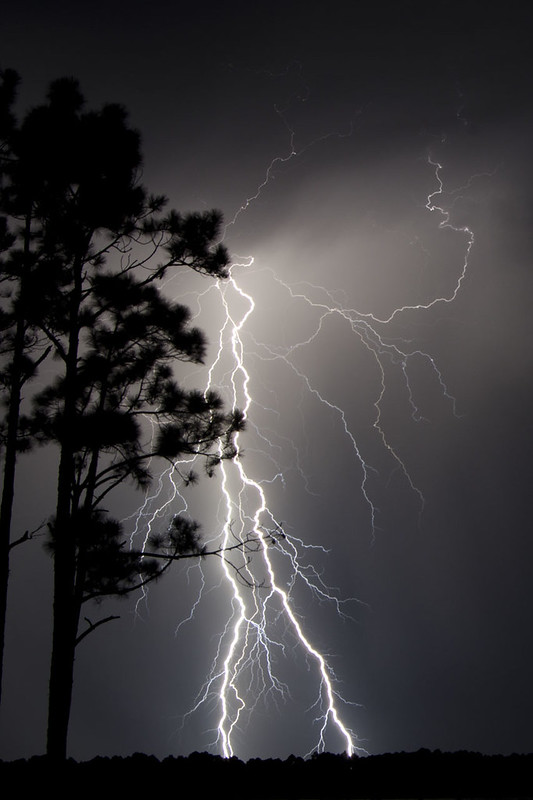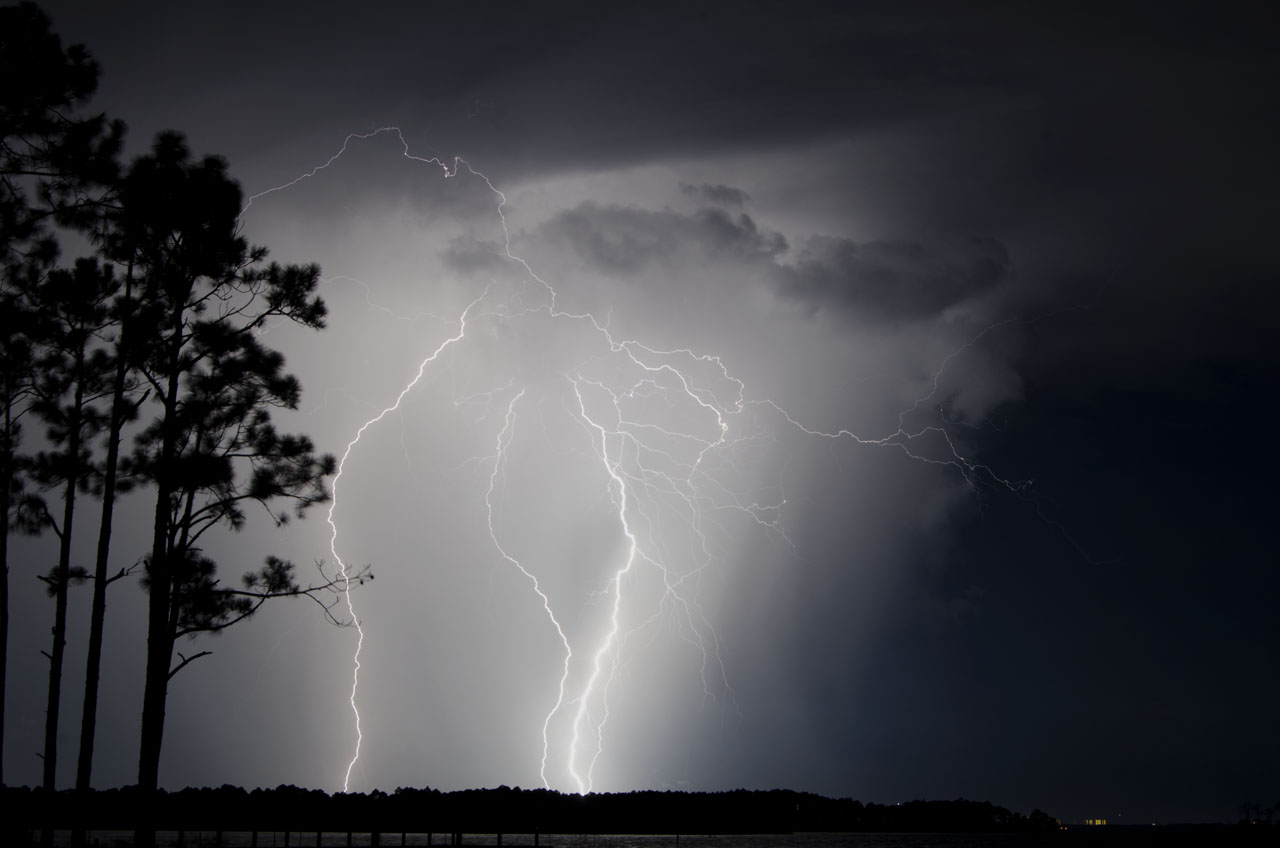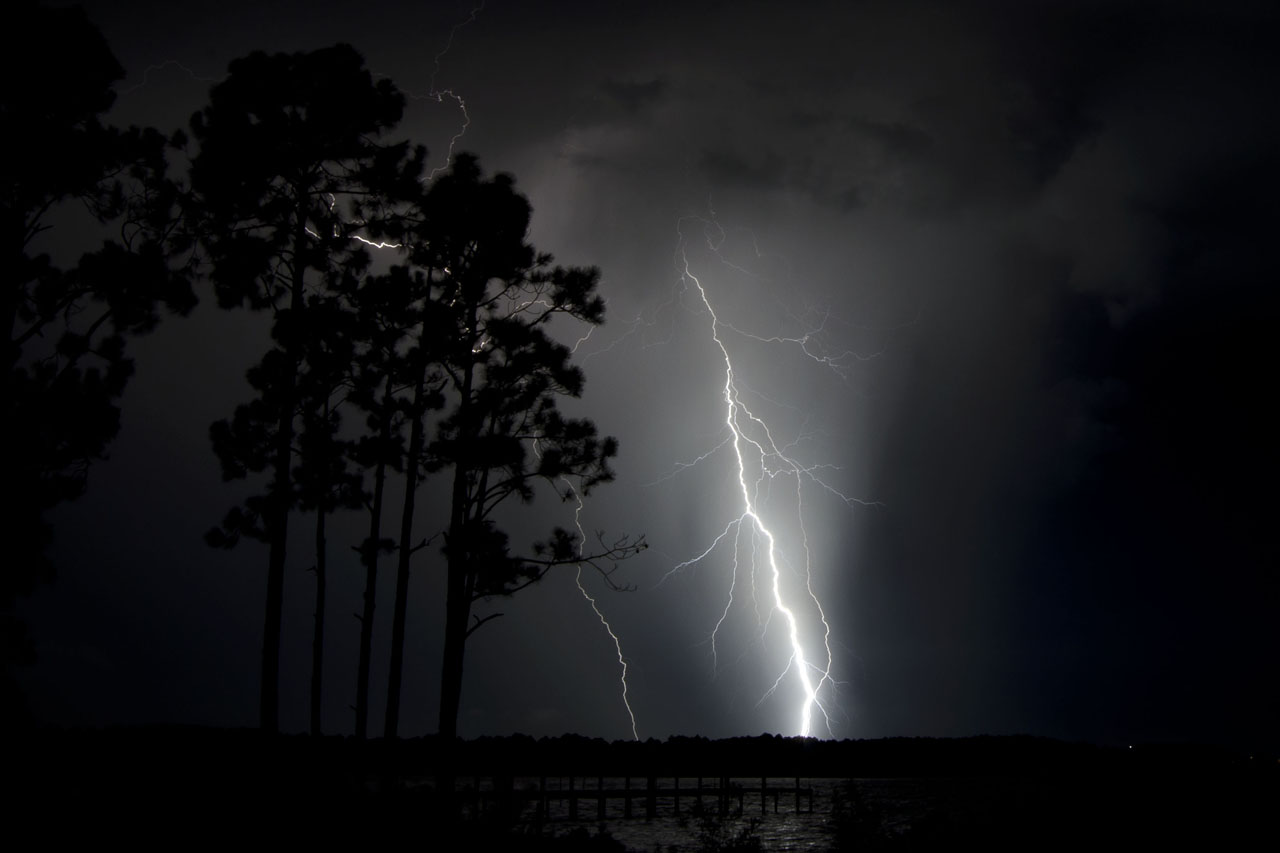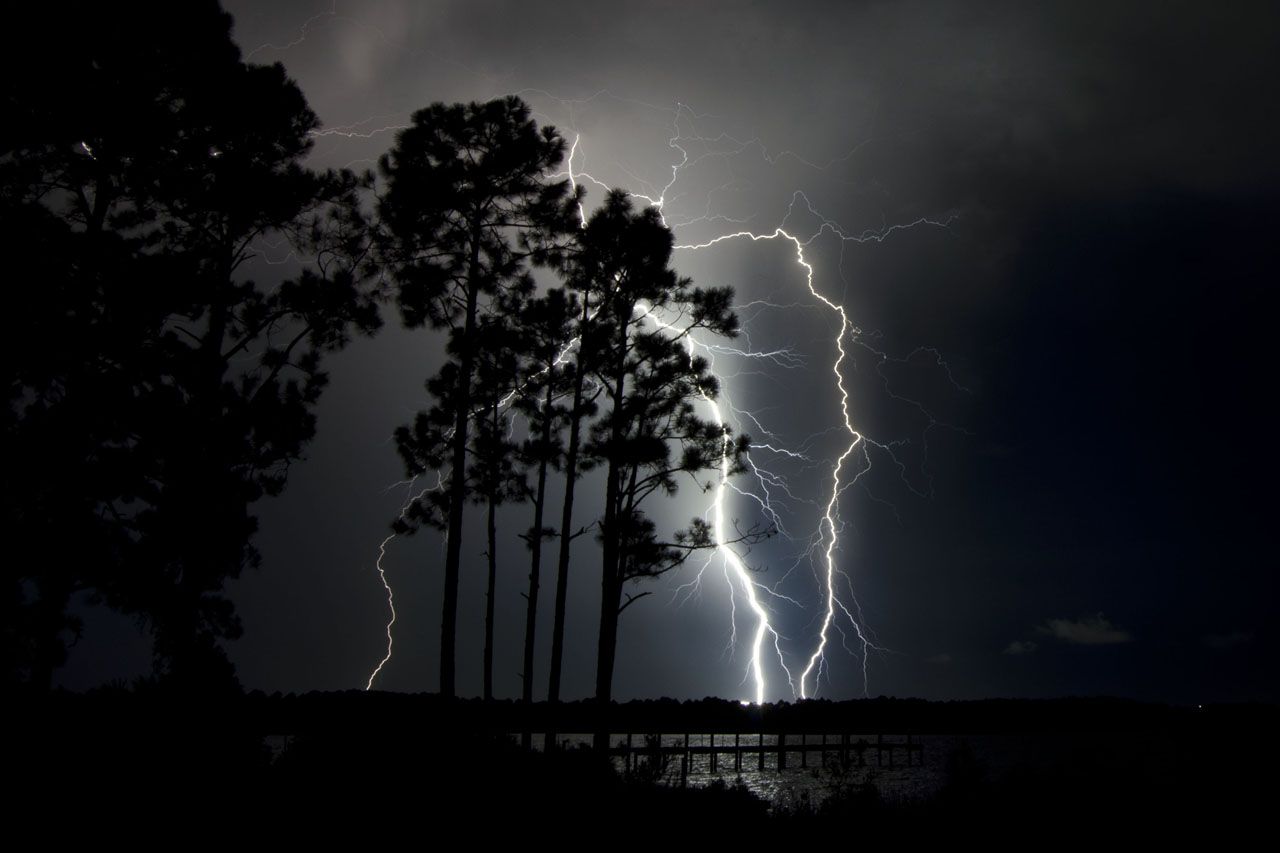So what were your camera settings? I got a Nikon D90 setup and try to experiment with various kinds of photos, with varying degrees of success. I've never tried lightning though.
My camera has a built-in intervalometer, so I basically set that to trip the shutter over and over and over for two or three hundred shots. Lots of blank ones, but lots of nice ones, too.
For these I ended up at ISO 100 and
f:22, which is the lowest exposure I could get with this camera and lens (D7000 and 18-55 kit lens.)
Shutter time is irrelevant at night unless you've got something lit up nearby. If it's a really bang bang bang bang storm, flashes a few seconds apart, I'll stay with a 2 or 3-second speed and just let the camera keep clicking. For these I used a longer shutter time, as the flashes were actually several minutes apart sometimes, and never closer than 30 or 45 seconds. I set the shutter speed to 15 seconds, then. The reason i use a shorter shutter with more frequent lightning is that I don't want multiple strikes in an image. Some people like that, though, having the extra drama of more stuff going on. personal taste.
It's vital that autofocus is turned off and the lens is manually focused for the distance. Just cranking it over to infinity won't work, so you have to be pretty careful. I can switch to Live View and then zoom in on the LCD display to get focus, lock the focus ring, and turn off Live View. I don't think the D90 has live view, so you might just try a focus setting, take a pic of a distant light, then zoom in on the image to check it. Way more trial and error, though.
This is the lowest exposure setting I've ever used for lightning. In the past I've used as high as ISO 800 and apertures all the way open to
f:4. I examined the results of the first couple of flashes when I started and saw that I had to dim it way down, though!
Don't try to wait for a flash and trip the shutter manually to get it. Most flashes simply don't last long enough. You have to just shoot frame after frame after frame after frame and get rid of the empty ones.
EVERYTHING changes if you want to shoot lightning in the daytime! You have to expose normally for the scene and just hope you get it. Smallest aperture and longest shutter, along with lowest ISO, to maximize the open shutter time. You might even underexpose a tad to allow for the extreme brightness of the flash when it happens.
Of course, if the thunder is loud, or close enough timewise to the flash, pack up and leave! Actual rain kinda sucks, too. Not just because you have to try to keep the camera and lens dry, which means poking a lightning rod, I mean umbrella, up into the sky, but the camera can't see through the rain anyway.
That's what makes these summer storms around here work so well for this. They're small systems, and you can see them without being IN them.
